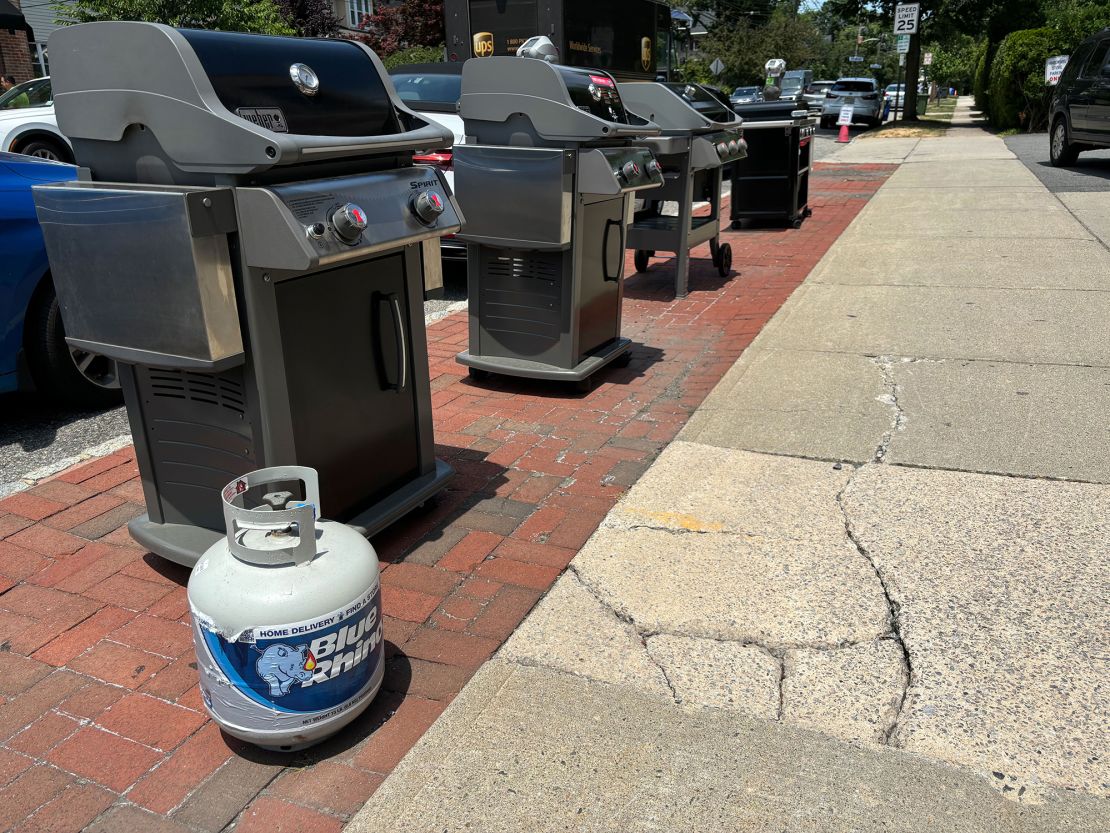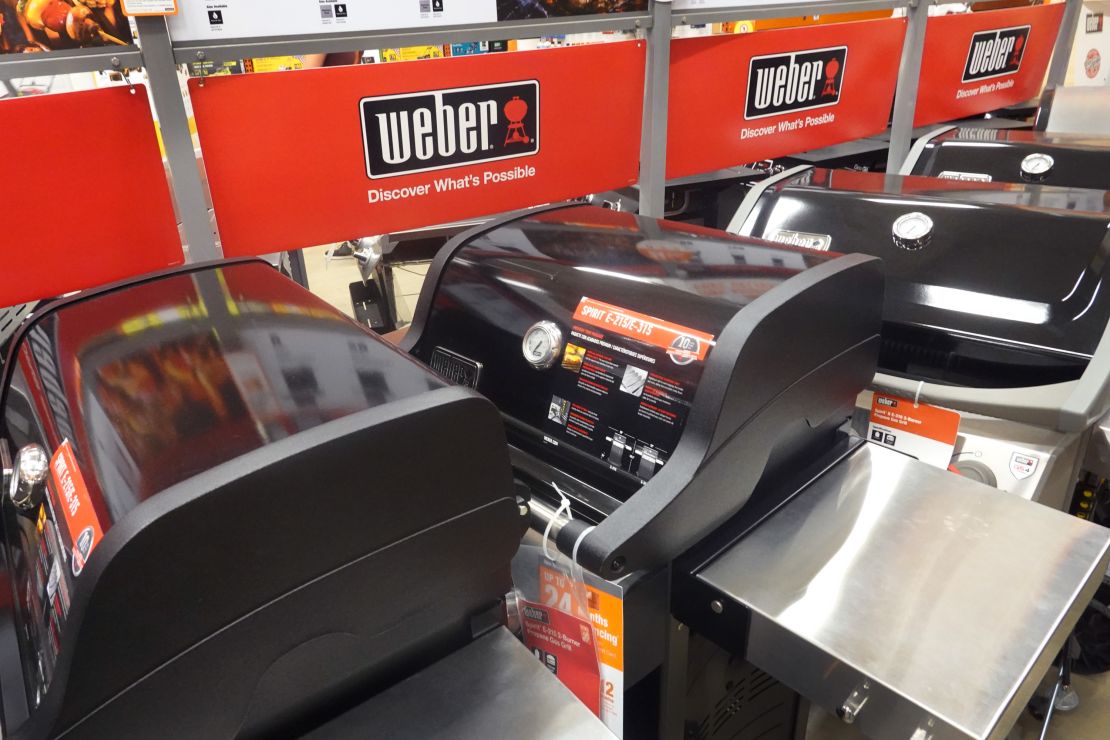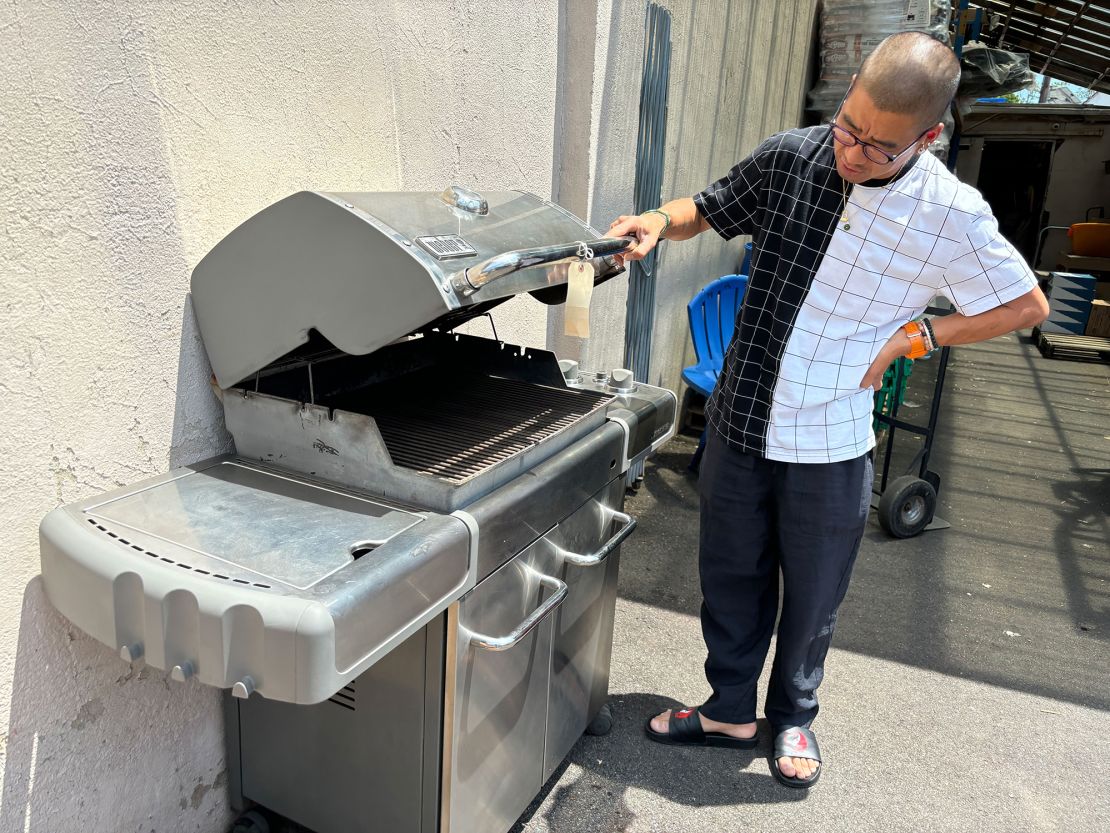CNN
—
Americans binged on grills during the pandemic, but the barbecue industry now faces a number of threats, including high meat prices and interest rates on top of economic uncertainty. Many feel no need to upgrade fairly recent purchases.
Market leaders like higher-end grill manufacturer Traeger, once a pandemic darling, reported its latest quarter’s grill sales were $76.8 million — a plunge from the $156.1 million the company raked in during the second quarter of 2021.
Best-selling grill brand Weber has also seen its market share decline since 2020, according to data from TraQline. (Weber did not respond to CNN’s request for comment.) Home Depot also reported pressure in more expensive patio and garden equipment, including grills, during its first quarter in May, part of a larger dip in sales and earnings.
And it’s not just the big brands. Local stores that sell grills and other backyard cooking gear similarly reported demand dropping.
“It’s trending down,” said Brian Bushfield, general manager at West Coast BBQ Shop in San Diego, California. He noted a sluggish start to June and a slow Memorial Day, despite the holiday being one of the most popular occasions to purchase new grills.
America might be less interested in buying grills, but they’re still using them a ton. And there’s evidence that the great BBQ sales evaporation may have hit a floor.
Americans aren’t cooking outside on grills less. At least, that’s according to statistics from the Hearth, Patio & Barbecue Association that reported 80% of U.S. homeowners owned a grill or smoker in 2023 — up from 64% in 2019. Of the new grill owners surveyed, 27% cited cooking more at home during Covid as the reason for their purchase.
Other than barbecue grills, consumables like charcoal pellets and propane tanks make up Home Depot’s grill category. Home Depot Senior Merchant of Grills Joe Downey said that these items drive a large portion of sales and that they are powered by new customers who purchased grills during the pandemic returning frequently to buy fuel.
“More cooks are cooking at home than ever before,” he said. The cost of food at home fell earlier this year as the cost of eating out rose, according to data from the Bureau of Labor Statistics that reported a 0.2% dip in grocery prices from March to April.
Roy Morchian, owner of American Royal Hardware in Montclair, New Jersey, told CNN that the number of grills sold in 2020 rose to 160 from his store’s yearly average range of 80 to 120 grills. And while their sales “have come back to normal” now closer to pre-pandemic levels, he notices new faces have joined familiar ones when purchasing propane tanks to fuel the Weber grills they stock.
Most grill makers and retailers seem to agree that the pandemic pulled forward demand for grills and other long-lasting home equipment as people searched for ways to fill their days and entertain their families at home.

San Diego Grill Pros owner Jessica Hernandez recounted “astronomical” sales numbers and dubbed 2020 their “unicorn year.”
Corey Martin, VP of Marketing at Texas Star Grill Shop described droves of people flocking to their Houston branch to buy grills and shelling out thousands of dollars for higher-end models like Weber’s Genesis, which retails between $800 and $1,800, and Traeger’s Timberline, which starts at about $3,000.
“It was like a really busy grocery store,” he said of his shop. But he and his staff knew that 2020 might be an aberration and the windfall might not last.
“It would be stupid to be in a grill business and think that Covid was the new normal,” Martin said. He said retailers who sell grills know it’s a slow growth and seasonal industry.

How to bake a showstopping dessert on your grill
Downey sees Home Depot’s grill sales stabilizing now following the lockdown-driven high. He anticipates that pandemic-purchased grills will reach the end of their life cycle and bring returning buyers with them in 2025.
“The bottom has been reached and we are on the upswing in terms of getting closer to the end of [the grill] life cycle,” he said.
A key issue is a grill’s life cycle: an average grill could last about five years and Americans purchased more than 21 million grills and smokers in 2020. It’s clear that the replacement phase still hasn’t kicked in quite yet.
Meanwhile, grill sellers are looking for ways to stoke demand.
Beyond running familiar summer promotions for popular grilling days like Memorial Day and Father’s Day, Downey said that Home Depot is trying to encourage young first-time homeowners to buy grills by introducing them to well-known brands at lower price points.

Downey said somebody purchasing a $99 Weber kettle later might look to buy the compact Weber Spirit. “Then as they grow, maybe they’ll aspire to get into the Weber Genesis,” he said, referencing the brand’s more expensive model.
Ace Hardware is running advertisements promoting its longstanding free assembly and delivery on grills –- from brands such as Big Green Egg, Blackstone, Weber and Traeger – priced $399 and up, for Ace Rewards members, which is a free program to join.
Traeger CEO Jeremy Andrus told CNN of the soft demand period “We are not waiting for this to end and riding it out.” He pointed to Traeger hosting weekend cooking demonstrations outside of retail stores like Home Depot and Ace Hardware.
“If we have an opportunity to get in front of the consumer and not only explain what a Traeger does but give them an opportunity to taste the food cooked off of a Traeger, it’s a very effective conversion tool,” he said.

But firing up demand in a traditionally slow-growth industry is a challenge, according to Simeon Siegel, an analyst at BMO Capital Markets who follows Traeger.
“If someone has a barbecue, they’re not going to buy another simply because it’s on sale,” he said. “At the end of the day, if someone doesn’t need to buy a grill, there’s only so many things companies can do to create demand.”
And economic trends haven’t helped. Beef and veal prices rose the fastest among other food categories in 2024 and the US Department of Agriculture expects prices to rise another 4% this year. Some consumers are abandoning meat entirely.
A year and a half ago, Bloomfield, New Jersey, resident Shikhiu Ing traded grilled meat for greens as a part of a conscious health decision. While he describes firing up his grill three times a week during the pandemic, he now finds less use for it after going mostly vegetarian.
“It’s non-functional right now. Grilling vegetables is kind of a chore to be honest,” he said. “It’s just faster in the air fryer. Throw some broccoli in there, air fry. You got vegetables.”

The grill industry isn’t a stranger to slumps or about-face shifts in consumer demand.
Andrus pointed to grill sales declining in the years following the 2008 recession before returning to growth for the next 10 years as a testament to the industry’s resiliency. “Americans love to cook outdoors,” he said. “They always have, they always will.”
For Newark, New Jersey, native Ayla Dunkley, cooking outdoors has been a family tradition. “I learned how to grill from my grandfather and my father, so I learned everything from them,” she said.
Following her grandfather’s advice, Dunkley replaces her Blackstone cooker every three to five years and waits until the summer season is over to shop at lower prices.
Fourth of July cookouts will cost $71.22 on average for 10 guests this summer, according to data from the American Farm Bureau Federation. That’s up 5% from last year and up 30% from 2019.
Yet Dunkley’s annual plans to celebrate the holiday with her family in Pennsylvania are still on, grill in tow.














